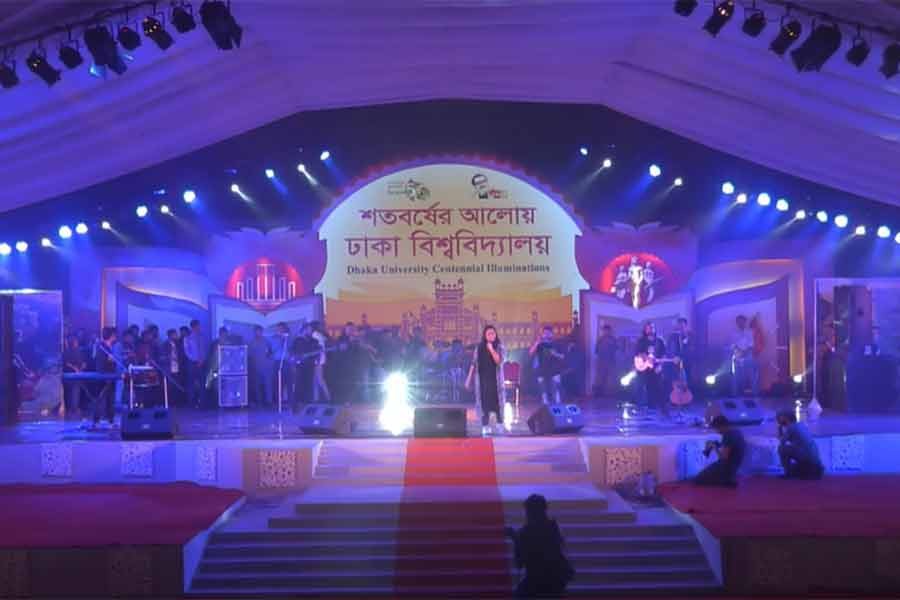
Published :
Updated :

The 16-day centenary celebrations of Dhaka University began on its campus on December 1 amid much fanfare. The observance of the festivity will conclude on December 16, the Victory Day, coinciding with the golden jubilee of the country's independence. President Abdul Hamid, also the chancellor of Dhaka University, inaugurated the programme at the university's central playground. Unlike the centennials of many other institutions, the University of Dhaka's completion of 100 eventful years carries a lot of significance. Beginning from the 1952 Language Movement through a series of student protests and demonstrations, the mass movements of 1969, and, finally, the 1971 Liberation War and the creation of independent Bangladesh, the university has witnessed scores of events speaking eloquently of the emergence of a major seat of higher learning. After a humble beginning with 12 departments on July 1, 1921, Dhaka University (DU) has grown into one of the largest universities in the Asia-Pacific. In 2021, the university boasts of over 37,000 students and around 2,000 teachers. It has 16 faculties, 83 departments and a number of institutes attached to it.
Its multi-faceted development in the last one hundred years can be compared with that of any prestigious university. In many respects the University of Dhaka has performed with brilliance up to the mid-1970s. It continued to earn kudos, adding to its fame as the 'Oxford of the East'. With its undergraduate students performing quite well in the reputed universities in the West, DU's continued progress turned out to be a foregone conclusion. In the distressing twists of political events in the 1980s and the 90s, it started sliding down from its earlier prestigious place. At one phase, the normal campus activities, especially which involved regular classes, deteriorated to such an extent that the institution almost became a mere shadow of its former self. Fierce campus violence leading to long sessions jam became the order of the day. In an anarchic situation like that on the campus, the non-inclusion of DU in the lists of top universities in the Asia-Pacific was not surprising. It was more so because Dhaka's was basically a 'public research university'.
After decades of producing famed scientists, academics, politicians, thinkers and authors, Dhaka University one day found itself bereft of all its previous gifts of genius. Scholarship had veritably deserted the institution, leaving it to a domain of mediocre and partisan teachers. The teaching community in general on the DU payroll was once found more interested in moonlighting than taking classes at their original workplace. This distressing reality stood in sharp contrast to the university's past which saw legendary educators discussing debatable subjects with their equally meritorious students.
The sharp decline of the University of Dhaka saddens many. The sadness stems from historical truths. The foremost of them was its foundation against the backdrop of the educational backwardness of the majority of the academically ambitious youths in East Bengal. Notwithstanding the tortuous path of history of the Bengal Partition, and its annulment, East Bengal was badly in need of a separate and autonomous university. This truth had been lost on a large section of students, as well as educators. Their belated realisation -- by that time the university had lagged behind its contemporaries in the sub-continent -- may now propel a positive turn-around in the situation. Many keep advancing measures to regain the university's lost glory. Academics suggest that the task should begin with the recruitment of an adequate number of dedicated, new-generation teachers and a flawless admission process.


 For all latest news, follow The Financial Express Google News channel.
For all latest news, follow The Financial Express Google News channel.